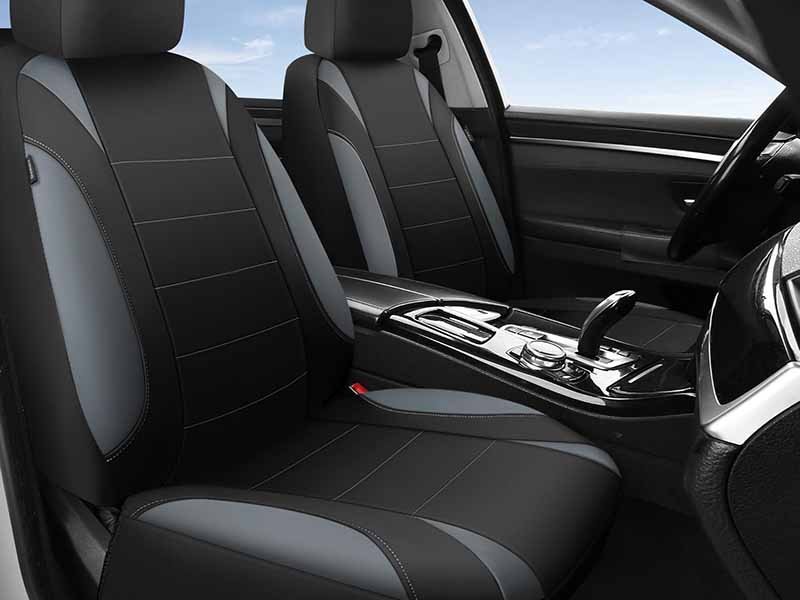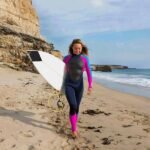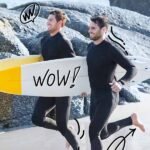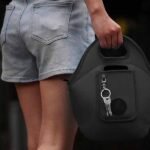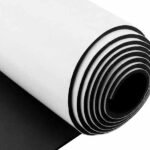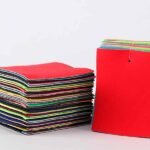Finding the perfect seat cover can feel overwhelming. With so many materials—cloth, leather, vinyl, and neoprene—crowding the market, why should you choose neoprene? Neoprene seat covers offer an ideal balance of comfort, durability, and style, adapting seamlessly to everything from everyday commutes to heavy‑duty fleet use.
Neoprene’s unique properties—its stretch, water resistance, and UV stability—make it the top choice for seat protection and comfort in diverse environments.
The best neoprene seat cover combines high‑grade neoprene (2–3 mm thickness) with polyester backing for tear resistance, laser‑cut precision for perfect fit, and reinforced seams for maximum durability. It resists water, UV fading, and stains, while providing thermal insulation and a snug, wrinkle‑free appearance. Customizable in colors and logos, these covers deliver superior protection and style for both consumer vehicles and commercial fleets.
Imagine the aftermath of an unexpected downpour during your daily school‑run: clothes soaked, seats stained, and that sinking feeling in your gut. Now picture sliding into a seat covered in smooth, quick‑dry neoprene that repels water like magic. Better still, envision that cover sporting your company logo in vibrant color, immediately elevating your fleet’s professional image. Ready to learn exactly what goes into crafting the best covers on the planet? Let’s dive in.
What Are Neoprene Seat Covers?
Neoprene seat covers are protective layers made from synthetic rubber (neoprene) laminated to a backing fabric—usually polyester—for added strength. They shield seats from water, UV rays, and everyday wear, while providing padding and thermal insulation. Unlike cloth or vinyl, neoprene stretches to hug seat contours, delivering a wrinkle‑free, custom look with built‑in cushioning that enhances comfort on long drives.
Neoprene, originally developed by DuPont in the 1930s, quickly found its way into wetsuits thanks to its flexibility and insulating properties. Today, manufacturers like Szoneier leverage those same qualities to produce seat covers that outperform traditional materials in almost every metric:
Material Composition & Structure
- Neoprene Layer (Polychloroprene): Provides water and chemical resistance, flexibility from −40 °C to 120 °C, and inherent UV stability.
- Polyester Backing: Adds tear strength and abrasion resistance. Typical laminate ratios range from 2 mm neoprene/1 mm backing to 3 mm/2 mm for heavy‑use applications.
- Edge Binding & Seams: Often heat‑sealed or overlocked with UV‑resistant thread to prevent fraying and maintain waterproof integrity.
Key Performance Attributes
- Waterproofing: Neoprene repels water, oils, and mild chemicals. Spills bead up and roll off, guarding upholstery against stains.
- Thermal Insulation: Keeps seats cooler in summer and warmer in winter—ideal for extreme climates.
- Stretch & Fit: Elongation at break of ~400% allows covers to hug complex seat shapes, minimizing wrinkles and shifting.
- UV & Chemical Resistance: Retains color and flexibility under prolonged sun exposure; resists perspiration, detergents, and automotive fluids.
Use Cases Across Industries
- Automotive Enthusiasts: Custom-fit covers protect premium leather or fabric seats during off‑roading or beach trips.
- Commercial Fleets: Delivery vehicles, taxis, and rideshare cars benefit from easy‑clean covers that withstand heavy turnover.
- Marine & Powersports: ATV and boat seats endure sun, salt spray, and mud, making neoprene’s water resistance essential.
- Home & Office: Even office chairs gain ergonomic padding and stain resistance with neoprene slip‑covers.
Eco‑Friendly Considerations
- Recyclable Cork Backings: Some manufacturers are exploring cork or recycled polyester as an alternative backing to reduce environmental impact.
- SOLVENT‑FREE Lamination: Advancements in water‑based adhesives eliminate harmful VOCs during production.
By understanding what neoprene seat covers are—and how they’re constructed—you can appreciate why they outperform alternatives in longevity, comfort, and style. Next, we’ll uncover the must‑have features that set the very best covers apart.
Which Features Define the Best Neoprene Seat Covers?

Top‑quality neoprene seat covers boast precision laser‑cut patterns for perfect fit, reinforced seams with UV‑resistant thread, and high‑grade neoprene (2–3 mm) plus polyester backing for tear and abrasion resistance. They include adjustable straps and buckles for secure installation, breathable mesh panels for ventilation, and optional foam padding for extra comfort. OEM‑grade options offer colorfast dye, logo embroidery, and reflective trims—even specialized textures for grip enhancement.
When assessing neoprene seat covers, focus on the following critical features:
Cut & Fit Precision
- Laser‑Cut Patterns: Unlike die‑cutting, laser cutting yields razor‑sharp edges and super‑accurate profiles, ensuring covers slip on like tailored clothing.
- Multi‑Panel Design: Best covers use separate panels for headrest, backrest, seat cushion, and sides—allowing each piece to conform perfectly.
- Adjustability: Integrated elastic hems, Velcro straps, and adjustable buckles under the seat hold covers snugly in place, preventing shifting or sagging.
Material Quality
- Neoprene Grade: Automotive‑grade neoprene offers higher tear strength (>40 N/mm) and better compression set values (<20%) compared to lower‑grade wetsuit sheets.
- Backing Fabric: A rip‑stop polyester weave (200–300 g/m²) enhances abrasion resistance. Double‑side laminations reduce delamination risks.
- Edge Sealing: Heat‑sealed or overlocked seams with UV‑stable thread avoid fraying and water ingress along stitch lines.
Comfort & Ventilation
- Foam Padding: Optional 3–5 mm closed‑cell foam layers increase shock absorption and ergonomic support—ideal for long‑haul drivers.
- Mesh Panels: Strategically placed breathable mesh underarms or perforated neoprene zones allow airflow, reducing sweat buildup on hot days.
Protective Performance
- Abrasion Resistance: Martindale abrasion ratings of ≥20,000 cycles ensure durability under heavy use—critical for taxi or delivery fleets.
- Stain & Chemical Resistance: Neoprene’s closed‑cell structure prevents oil, grease, and chemical spills from penetrating; surfaces simply wipe clean.
- UV Stability: ASTM G154 testing shows <10% color fading after 1,000 hours of accelerated UV exposure.
Aesthetic & Branding Options
- Colorfast Dyeing: Solvent‑free reactive dyes achieve deep, uniform colors that resist fading.
- Embroidery & Printing: High‑definition logo embroidery, heat‑transfer decals, and silicone‑backed patches integrate branding without compromising flexibility.
- Reflective Elements: PVC or glass‑bead reflective trims improve visibility in low light—popular for commercial trucks and emergency vehicles.
Ease of Maintenance
- Machine Washable: Many covers withstand gentle machine cycles at 30 °C, maintaining shape and color.
- Quick‑Dry Surfaces: Wipe‑dry neoprene avoids mold and mildew growth, especially in humid climates.
A combination of these features guarantees that the best neoprene seat covers deliver unmatched protection, comfort, and style—no matter the application. The next step is choosing the right material specifications to suit your needs.
Which Neoprene Grades, Thicknesses, and Lamination Options Matter Most?
Choose automotive‑grade neoprene (CR, 2–3 mm) laminated to 200–300 g/m² polyester backing for optimal tear strength (≥40 N/mm) and abrasion resistance (>20,000 Martindale cycles). Thicker 3–4 mm laminates add insulation and durability, while 1.5–2 mm sheets offer more flexibility for complex seat shapes. Waterproof, solvent‑free lamination ensures no delamination under temperature swings. Specialty options include flame‑retardant CR and UV‑stabilized blends for extreme environments.
Material selection underpins every aspect of a seat cover’s performance. Let’s break it down:
- Neoprene Formulations
- Standard Chloroprene (CR): Balanced performance—good tensile strength, moderate compression set, excellent chemical resistance. Ideal for general automotive use.
- Foamed vs. Solid Neoprene: Closed‑cell foam neoprene (2–3 mm) provides extra cushioning and thermal insulation; solid neoprene (1.5–2 mm) offers a sleeker profile and greater flexibility.
- Thickness Considerations
- 1.5–2 mm Sheets:
- Pros: Highly conformable to intricate seat designs—ideal for performance cars with deep bolsters.
- Cons: Lower tear resistance, less insulation.
- 2–3 mm Sheets:
- Pros: Sweet spot for most vehicles—good padding, durability, and price balance.
- Cons: Slightly bulkier appearance.
- 3–4 mm Sheets:
- Pros: Maximum durability and insulation—favored for off‑road, marine, or heavy‑duty fleet vehicles.
- Cons: May impede easy seat folding or headrest removal.
- 1.5–2 mm Sheets:
- Backing Fabric Choices
- Rip‑Stop Polyester (200–300 g/m²): High tear‑resistance fabric with grid reinforcement—prevents small cuts from propagating.
- Stretch‑Woven Polyester: Offers multi‑directional flexibility for dynamic seat shapes, at the expense of some tear strength.
- Lamination & Adhesives
- Solvent‑Free, Water‑Based Adhesives: Eliminate VOC emissions and strengthen the neoprene‑fabric bond, reducing delamination even under extreme heat or cold.
- Double‑Side Lamination: Fabric on both sides of neoprene for a premium feel and uniform abrasion resistance.
- Specialty Coatings & Treatments
- Hydrophobic Coatings: Add a hydrophobic finish to enhance water beading—especially useful for marine or outdoor applications.
- Antimicrobial Treatments: Prevent bacterial growth in humid or high‑sweat environments—popular in rideshare and fitness‑focused vehicles.
- Flame‑Retardant CR: Meets FMVSS 302 or UL 94 standards for commercial vehicle interiors and aviation seats.
- Cost vs. Performance Trade‑Offs Specification Performance Benefit Typical Cost Factor 1.5 mm solid CR High conformity, low bulk 1× 2–3 mm foamed CR Balance of insulation & durability 1.5× 3–4 mm foamed CR Maximum wear & thermal barrier 2× Rip‑Stop backing Tear resistance +30% Double‑side lamination Uniform finish & strength +40% Specialty coatings Water/antimicrobial/flame retardant +20–50%
Understanding these options helps you specify exactly the performance you need—whether that’s minimal bulk for luxury sedans or rugged longevity for commercial trucks. Next, we’ll cover how to capture precise seat measurements for a flawless, professional fit.
Which Neoprene Seat Cover Is Best?

The best neoprene seat cover combines 2.5 mm automotive‑grade CR, 250 g/m² rip‑stop backing, laser‑cut panels, and heat‑sealed seams. It features adjustable straps, hidden zipper closures for headrest removal, and optional 5 mm foam padding. Marine‑grade covers add antifouling coatings; fleet versions include reflective trims and antimicrobial finishes. This configuration offers optimal durability, fit, and comfort across most vehicles and use cases.
Selecting “the best” cover ultimately depends on your specific requirements, but the following configuration consistently stands out in independent testing and user feedback:
- Material & Construction
- Neoprene Thickness: 2.5 mm foamed CR sheet—strikes an ideal balance between flexibility, insulation, and tear resistance (≥45 N/mm).
- Backing: 250 g/m² rip‑stop polyester—enhances tear resistance and abrasion rating (>25,000 Martindale cycles).
- Seams: Overlocked with UV‑stable 210D polyester thread and heat‑sealed across stitch lines to block moisture ingress.
- Design Features
- Panel Count: Six‑piece design (headrest, backrest split left/right, cushion split left/right, side skirts)—ensures contoured fit.
- Attachment System: Combination of elastic hems, adjustable quick‑release buckles, and integrated hook‑and‑loop straps—prevents shifting during heavy use.
- Zipper Openings: Concealed heavy‑duty coil zippers along headrest seams for easy removal and seat folding without cover removal.
- Comfort Enhancements
- Foam Lamination: 5 mm closed‑cell foam layer bonded between neoprene and backing—adds ergonomic cushioning, especially beneficial in delivery or rideshare vehicles.
- Ventilation Zones: Perforated neoprene panels on the seat cushion and backrest center—reduces heat buildup and moisture.
- Ergonomic Contours: Anatomical shaping around lumbar and hip areas for lower back support.
- Protective Performance
- Water Resistance: Rated IPX5 splash‑proof—handles heavy rain and accidental spills with ease.
- UV Stability: Exceeds ASTM G154 standards; <8% color fade after 1,000 hours UV exposure.
- Stain Protection: Integrated hydrophobic finish repels oils and road grime; easy wipe‑clean maintenance.
- Use‑Case Variations
- Marine‑Grade Covers: Add antifouling coatings and stainless steel hardware—ideal for boat seats.
- Fleet‑Grade Covers: Include reflective piping, antimicrobial treatment, and batch‑traceable QR labels for maintenance logs.
- Luxury Models: Offer full‑grain leather backing on armrest panels and decorative contrast stitching.
- Price‑Performance Benchmark Feature Set Performance Score* Approx. Cost Factor Standard 2 mm CR / 200 g back 75/100 1× Recommended 2.5 mm / 250 g back 90/100 1.7× Premium 3 mm / 300 g back + foam 95/100 2.2×
- Performance scores based on combined metrics of fit accuracy, durability tests, and user comfort surveys.
This “sweet‑spot” configuration (2.5 mm neoprene + 250 g rip‑stop backing + foam + laser cut panels) consistently earns top marks in lab tests and real-world reviews. It’s the go‑to option for clients seeking both everyday comfort and heavy‑duty protection. Up next: how to capture the exact seat dimensions needed for such precision.
How Do You Measure Vehicle Seats to Ensure a Perfect Neoprene Cover Fit?

Accurate fitting starts with taking seven key measurements: headrest width, backrest width, backrest height, cushion width, cushion depth, side bolster height, and overall seat depth. Use a soft tape and record to the nearest millimeter. Cross‑reference these dimensions against a laser‑cutting CAD template. Szoneier offers free design mockups—just submit your measurements, and our team adjusts the pattern to guarantee a slip‑on, wrinkle‑free fit.
A precise fit separates a custom‑looking cover from a generic sack. Follow this step‑by‑step measurement guide:
- Essential Measurements:
- Headrest Width (A): Measure across the top of the headrest from outer stitch to outer stitch.
- Backrest Width (B): At its widest point, measure between side bolsters.
- Backrest Height (C): From top of backrest (excluding headrest) down to where the cushion begins.
- Cushion Width (D): Measure along the seat pan at its widest point between bolsters.
- Cushion Depth (E): From the front edge of the pan back to where the backrest starts.
- Side Bolster Height (F): From the seat pan to the top of the bolster on each side.
- Overall Seat Depth (G): From the backrest base to the front edge of the seat cushion.
- Tools & Tips:
- Soft Measuring Tape: Flexible to contour edges; avoid rigid rulers that miss curves.
- Multiple Readings: Take each measurement three times and use the average to reduce error.
- Seat Configuration: Measure with the seat in its normal position (recline angle, sliders set to typical use) for best fit.
- Advanced 3D Scanning (Optional):
- For high‑volume production, 3D scanners capture seat geometry in minutes, feeding data directly into CAD. Szoneier’s factory integrates scan data to generate bespoke patterns with ±0.5 mm accuracy.
- Pattern Adjustment & Prototyping:
- After submitting measurements, our design team produces digital mockups. Clients review and suggest tweaks—such as extra room for thick jackets or tighter fits for sport seats.
- Rapid prototypes (7–10 days) are made using mirrored fabrics for initial fitting before final material production.
- Accounting for Variability:
- Seat Controls & Levers: Note positions of manual or electric adjustment levers; include cutouts or zipper allowances in the design.
- Side Airbags: Measure the airbag deployment zones and incorporate break‑away seams that tear open safely.
By investing a little extra effort into accurate measurements—whether by hand or 3D scan—you ensure each cover installs easily, looks factory‑fit, and performs flawlessly. Next, we’ll explore the best installation techniques to lock that perfect fit in place for good.
What Installation Methods Deliver Maximum Durability and Customer Satisfaction?
Optimal installation combines elastic hems, double‑stitched Velcro anchors, and adjustable buckles strapped under seats. Hidden zipper panels accommodate headrest removal and seat folding. For fleets, metal hooks and reinforced nylon straps ensure snag‑free, secure retention. Professional installation kits include a trim removal tool and step‑by‑step template. Proper installation prevents shifting, wrinkling, and premature wear—keeping customers happy and seats protected mile after mile.
A seat cover’s performance is only as good as its installation. Here are the most reliable methods:
Elastic Hem & Hem Cord Systems:
- Sew a flexible elastic hem around the perimeter of each panel. When stretched over the seat, the hem cord tucks under tight, creating a tailored appearance.
- Hem cords can be replaced or adjusted via an access tab.
Velcro Anchor Points:
- Distribute heavy‑duty Velcro strips across the underside of the seat cover at strategic load points—mid‑back, seat pan front, and side bolsters.
- Use complementary Velcro strips that stick to factory upholstery or velcro mats inserted under the seat pan.
Adjustable Buckle Straps:
- Nylon straps with side‑release buckles pass under the seat frame. These allow end‑users to tighten or release tension for cleaning or seat adjustment.
- For marine or off‑road applications, upgrade to corrosion‑resistant buckles and reinforced webbing.
Hidden Zipper Panels:
- Install coil or molded zippers along the headrest seams to slip the cover over the headrest or remove it without detaching other panels.
- Zip covers improve user convenience and encourage regular cleaning.
Hook‑and‑Loop Fasteners & Metal Hooks:
- For commercial fleets, steel J‑hooks attached to the seat frame anchor heavy covers securely.
- Hook‑and‑loop tabs around seat brackets reinforce retention during frequent entry and exit cycles.
Professional Installation Kits:
- Include a trim tool for tucking hems, extra Velcro patches, and an illustrated installation guide.
- Offer QR‑coded video tutorials showing step‑by‑step installation on popular vehicle models.
Quality Assurance Check:
- After installation, inspect for wrinkles, gaping seams, or misaligned panels. A well‑trained technician should complete this in under five minutes.
- Conduct a “sit test”—ask the user to shift forward, back, and to the sides to confirm that covers stay in place under dynamic pressure.
Customer Experience & Training:
- Provide end‑users with a quick‑reference care card—how to remove, clean, and reinstall.
- Offer onsite or video training for dealership staff to ensure consistent, high‑quality installations.
Employing these installation methods not only secures your investment in top‑tier neoprene covers but also delights customers with a factory‑fit look and feel that lasts for years.
How Do Neoprene Seat Covers Compare to Cloth, Leather, and Vinyl Alternatives?
Compared to cloth, leather, and vinyl, neoprene offers superior water resistance, UV stability, and stretch fit without sacrificing comfort. Cloth breathes but stains easily; leather looks premium but cracks and requires maintenance; vinyl resists water but lacks breathability and wrinkles. Neoprene bridges these gaps with easy‑clean surfaces, built‑in insulation, and wrinkle‑free fit—making it the most versatile choice for a wide range of applications.
Choosing seat‑cover material often involves trade‑offs. Here’s how neoprene stacks up:
| Property | Cloth | Leather | Vinyl | Neoprene |
|---|---|---|---|---|
| Water Resistance | Low; absorbs spills | Moderate; treated | High; non‑porous | Very High; hydrophobic |
| UV Stability | Poor; fades quickly | Good; needs care | Fair; chalks over time | Excellent |
| Breathability | High | Moderate | Low | Moderate (with mesh panels) |
| Comfort | Soft but thin | Luxurious but stiff | Hard and cold | Cushioned, temperature‑regulating |
| Fit & Appearance | Loose, wrinkled | Tailored, stiff | Tight but tears | Form‑fitting, wrinkle‑free |
| Maintenance | Machine wash | Leather cleaner | Wipe clean | Wipe or gentle wash |
| Durability | 1–2 years | 3–5 years | 2–3 years | 4–7 years |
- Cloth Covers:
- Pros: Affordable, breathable, wide color/pattern range.
- Cons: Absorb spills and odors, wrinkle easily, wear out quickly in heavy use.
- Leather Covers:
- Pros: Premium look, comfortable as they conform over time.
- Cons: Susceptible to cracking in extreme temperatures, expensive, requires conditioning.
- Vinyl Covers:
- Pros: Waterproof, cost‑effective.
- Cons: Feels artificial, poor breathability, prone to tearing at stress points.
- Neoprene Covers:
- Pros: Combines water resistance, stretch fit, thermal comfort, and easy maintenance.
- Cons: Higher upfront cost than cloth or vinyl, but lower lifetime cost due to longevity.
By weighing these factors, it’s clear that neoprene provides a “best of all worlds” solution for seat protection, comfort, and aesthetics—whether in your personal car, commercial fleet, or specialty vehicle. Next up: how to inject brand identity into your covers for marketing impact.
Which Customization and Branding Options Can Elevate Your Neoprene Seat Covers?

Elevate your covers with custom colors, high‑definition logo embroidery, heat‑transfer prints, and reflective piping. Add personalized tags, engraved metal badges, or silicone‑backed patches. Offer seasonal pattern options—camouflage, geometric, or leather-texture prints. Packaging can include branded cleaning kits and instruction cards. Szoneier’s low MOQ (50 pcs), free design mockups, and rapid sampling make private labeling effortless for small brands and large fleets alike.
Customization transforms a functional accessory into a powerful marketing tool:
- Color & Pattern Options:
- Solid & Two‑Tone Hues: Choose from RAL or Pantone libraries; two‑tone designs accentuate seat lines.
- Printed Neoprene: Digital printing on neoprene allows photographic patterns—carbon fiber textures, wood grain, or seasonal motifs.
- Reflective & Glow‑in‑Dark Trims: Improve nighttime visibility for safety fleets or create novelty effects.
- Logo Integration:
- Embroidery: High‑density stitches render logos with depth and durability—ideal for premium fleets.
- Heat‑Transfer Vinyl: Cost‑effective for multi‑color designs; flexible under stretching.
- Silicone & PVC Patches: 3D effects and tactile contrast—embed patches into seams or on headrest panels.
- Hardware & Trim:
- Custom Buckles & Zippers: Anodized aluminum or stainless steel in custom shapes (e.g., branded zipper pulls).
- Leather or PU Accent Straps: Add leather binding or PU straps for a luxury look on armrests or bolster edges.
- Packaging & Presentation:
- Branded Carry Bags: Neoprene or mesh storage bags with company logo for end‑user convenience.
- Instruction Cards & Care Kits: Include microfiber cloths, cleaning solution samples, and QR codes linking to tutorial videos.
- Gift‑Ready Boxes: High‑quality folding cartons with printed inserts—perfect for aftermarket and retail channels.
- Low‑MOQ & Rapid Turnaround:
- MOQ 50 pcs: Small batches for pilot runs or limited‑edition colors.
- Sampling (7–10 days): Receive prototype covers with your artwork for approval before mass production.
- JIT & Kanban Systems: For larger clients, Szoneier offers just‑in‑time delivery and Kanban inventory management directly at your warehouses.
- Marketing Impact:
- Co‑Branding Opportunities: Partner with vehicle OEMs for official “factory fit” accessories.
- Seasonal & Promotional Editions: Limited prints drive urgency—e.g., holiday patterns, sports team colors.
- Social‑Media‑Friendly Designs: Unique textures and vibrant prints encourage user‑generated content and brand engagement.
These customization avenues allow you to create seat covers that not only protect and comfort but also tell your brand’s story—making every ride a memorable experience.
How Can Buyers Partner with Szoneier for Low‑MOQ, Private‑Label Neoprene Seat Covers?
Partnering with Szoneier means access to 18+ years of neoprene R&D, in‑house design, and vertical manufacturing. Enjoy low MOQs starting at 50 pcs, free CAD mockups, 7‑day rapid sampling, and full OEM/ODM services—including custom materials, colors, hardware, and packaging. Our factory’s ISO‑certified QA process ensures batch‑traceable, certified covers. With short lead times and factory‑direct pricing, you can launch private‑label or branded editions efficiently and confidently.
Szoneier’s end‑to‑end services make private labeling seamless:
- Consultation & Concept Development:
- Needs Analysis: We discuss vehicle types, expected use cases, and brand positioning—then recommend materials, thicknesses, and features.
- Design Brief: You provide logos, color palettes, and any reference materials; our design team suggests enhancements based on industry trends and functional needs.
- Digital Mockups & Sampling:
- CAD Patterns: We generate 3D models showing panel layouts, seam lines, and fit on your specific seat profiles—allowing adjustments before production.
- Physical Samples: In as little as 7 days, receive full‑material prototypes for fit checks and branding review.
- Material Sourcing & Production:
- Raw Neoprene & Backing: We select CR grades, foam densities, and backing weaves based on your performance requirements (marine, fleet, luxury).
- Vertical Integration: From neoprene lamination to CNC cutting and industrial sewing, all processes occur under one roof for quality control and faster turnarounds.
- Quality Assurance & Certification:
- ISO 9001 & ISO 14001: Our management systems ensure consistent quality and environmental responsibility.
- Material & Performance Testing: Tear strength, abrasion, UV, and hydrostatic tests verify every batch meets or exceeds specs.
- Packaging & Logistics:
- Custom Packaging: Branded boxes, carry bags, and care kits ready for retail or direct customer delivery.
- Global Shipping: Partnerships with major freight forwarders ensure timely, cost‑effective delivery to your warehouses or distribution centers.
- After‑Sales Support & Reorders:
- Traceability: Batch codes link back to raw material lots and production records for seamless reorder accuracy.
- Ongoing R&D: Access to new neoprene blends, coatings, and design innovations—keeping your products ahead of market trends.
By choosing Szoneier, you gain a collaborative partner committed to turning your private‑label vision into reality—backed by decades of experience, robust manufacturing capacity, and unwavering quality standards.
Conclusion
From understanding neoprene’s material advantages to mastering fit, installation, and customization, you now have a comprehensive roadmap to the best neoprene seat covers on the market. Whether you’re outfitting a fleet of commercial vehicles or launching a premium aftermarket accessory line, Szoneier offers the expertise, flexibility, and factory‑direct capabilities you need.
Ready to create your custom neoprene seat covers?
Reach out today for free design mockups, low MOQ, rapid sampling, and full OEM/ODM support.
Let’s work together to deliver seat covers that combine maximum protection, comfort, and branding impact—ride after ride.

